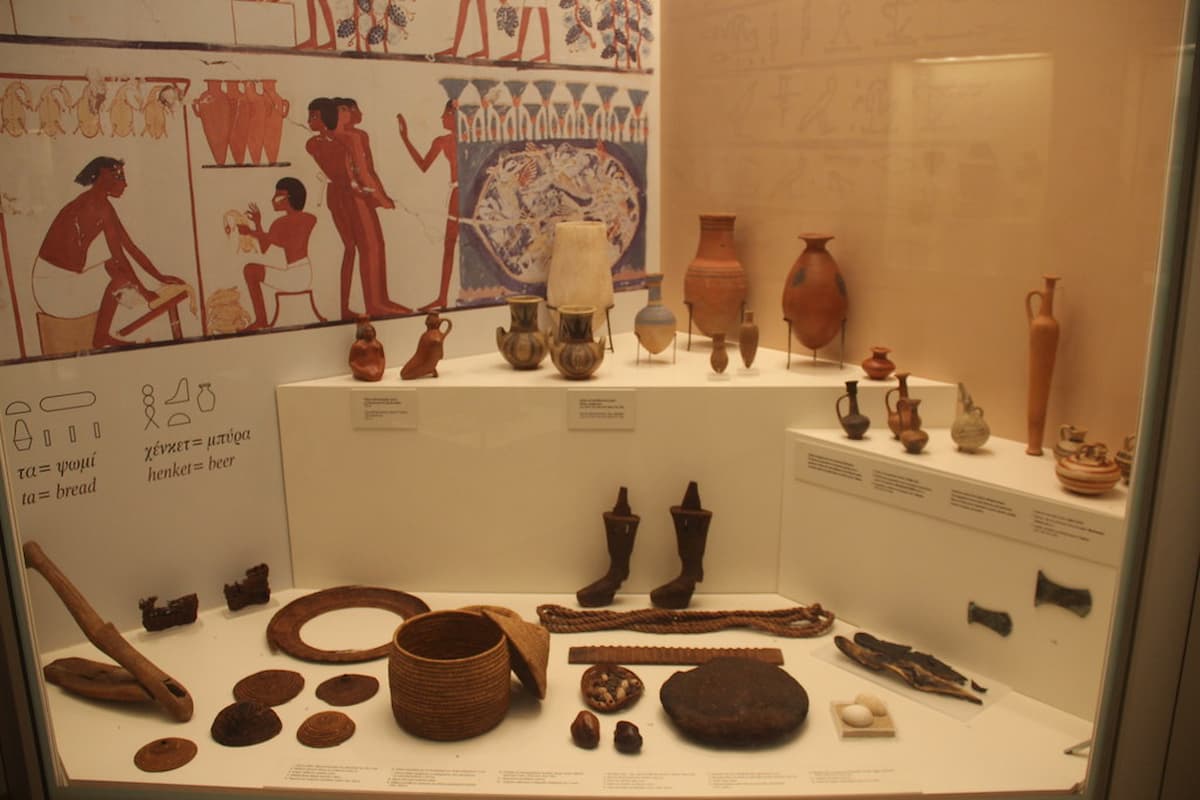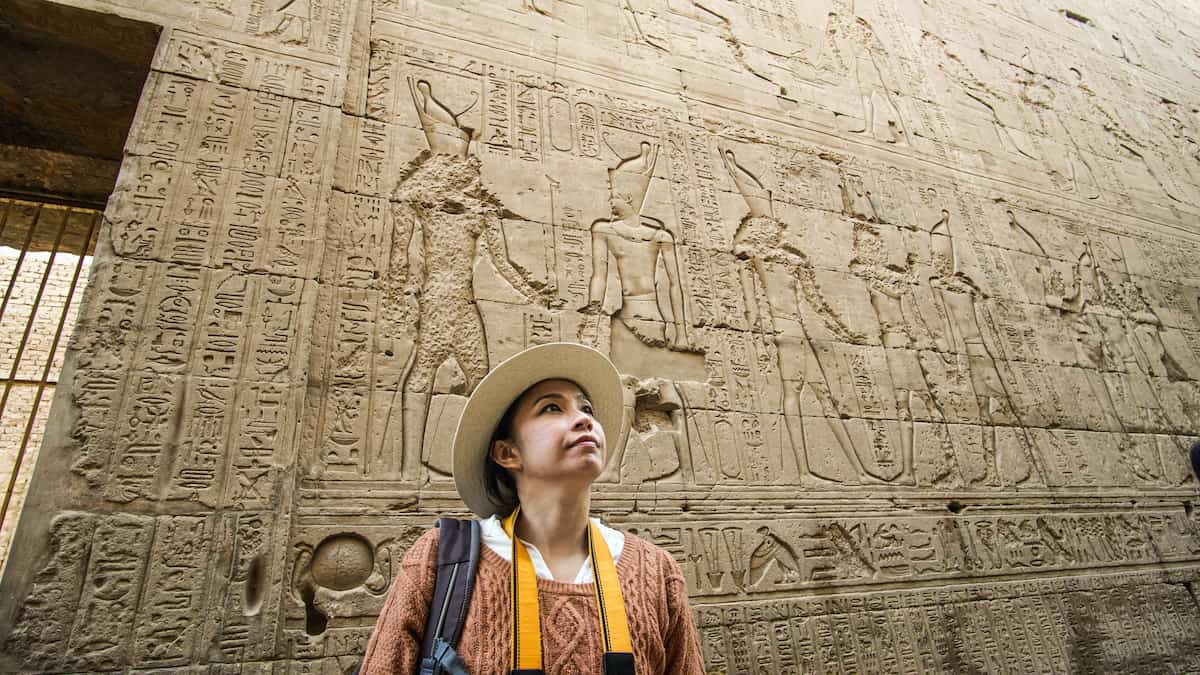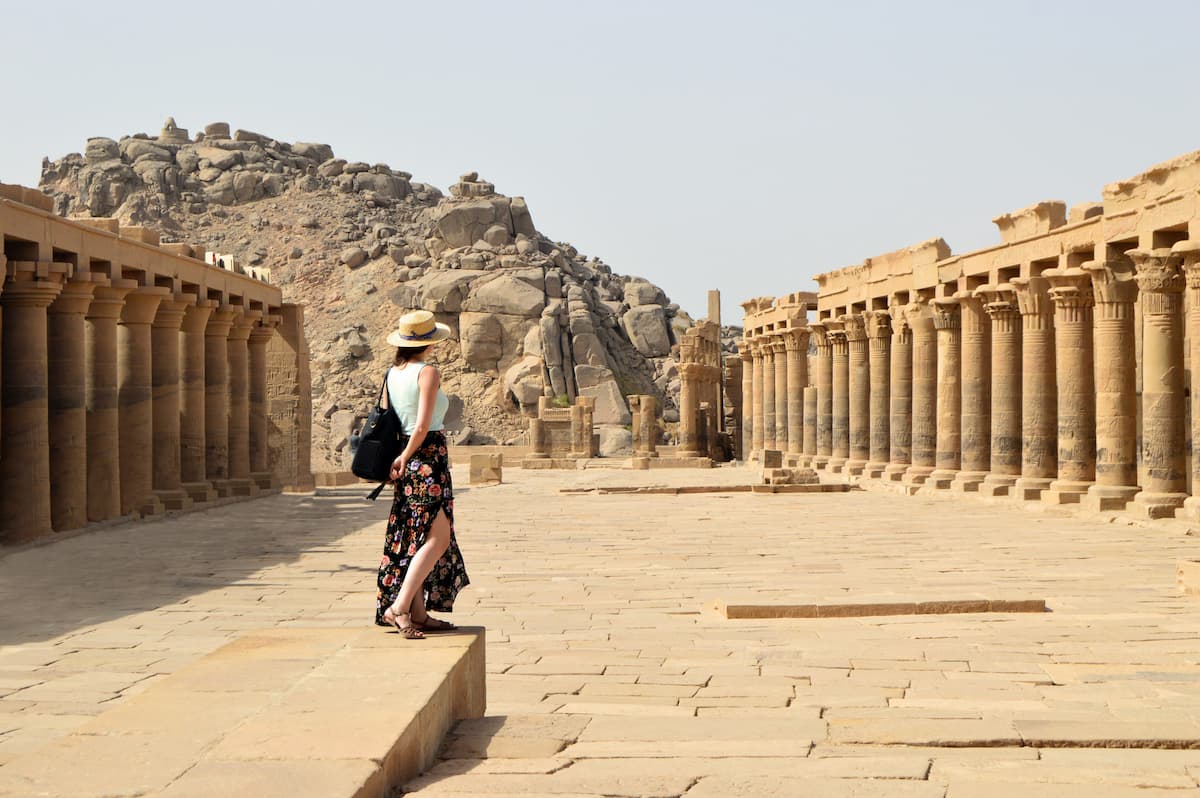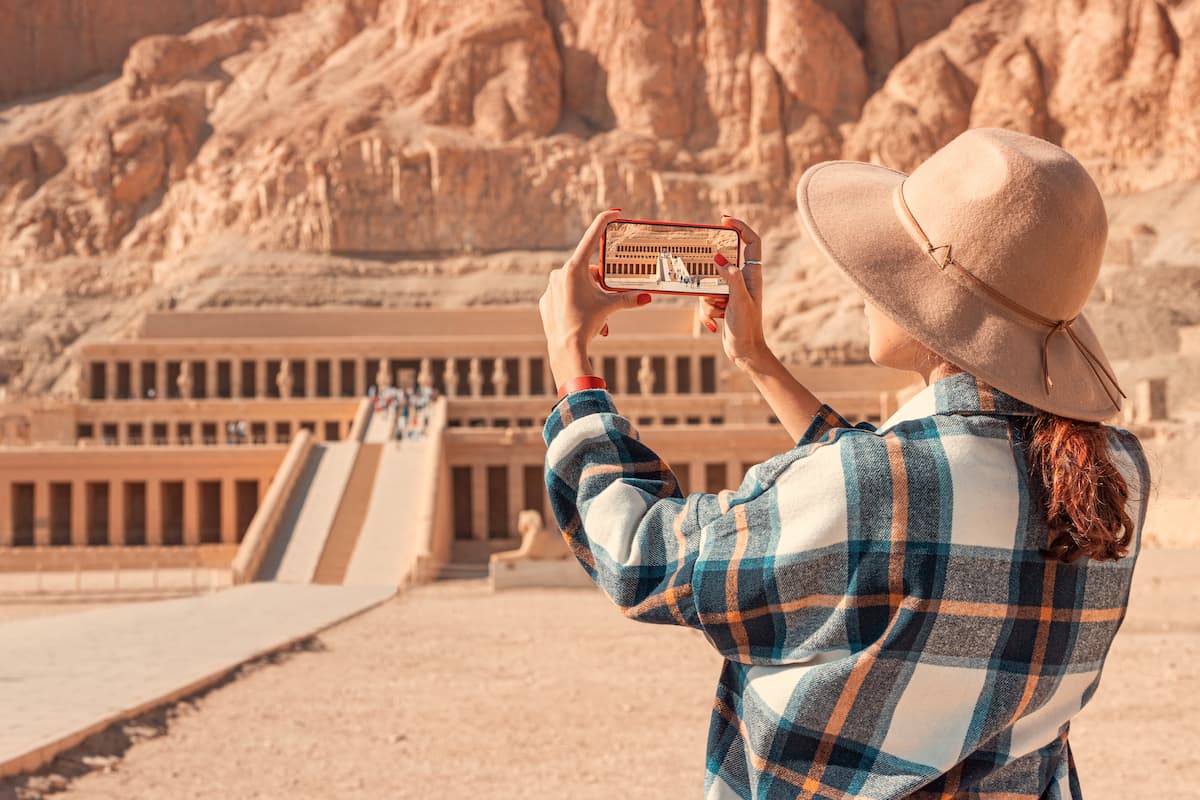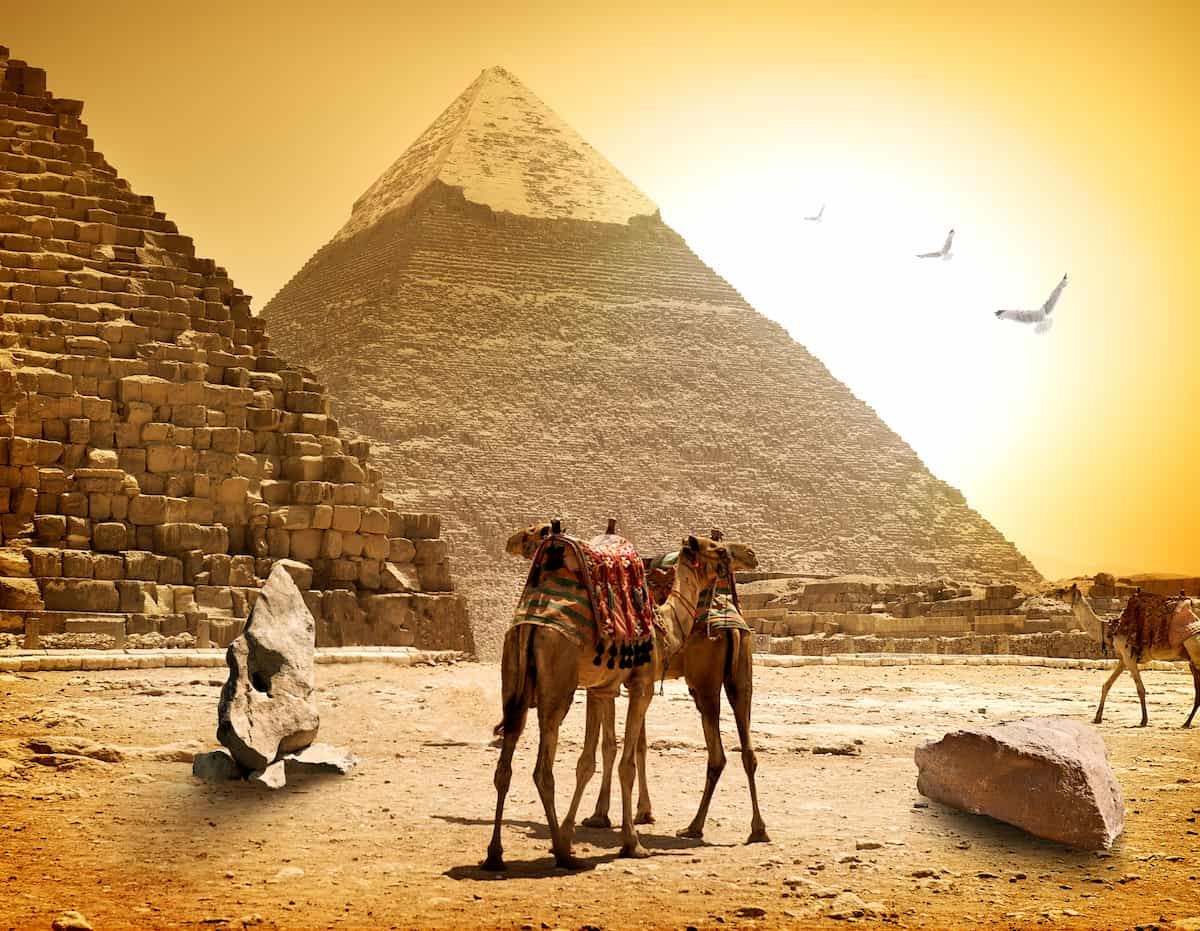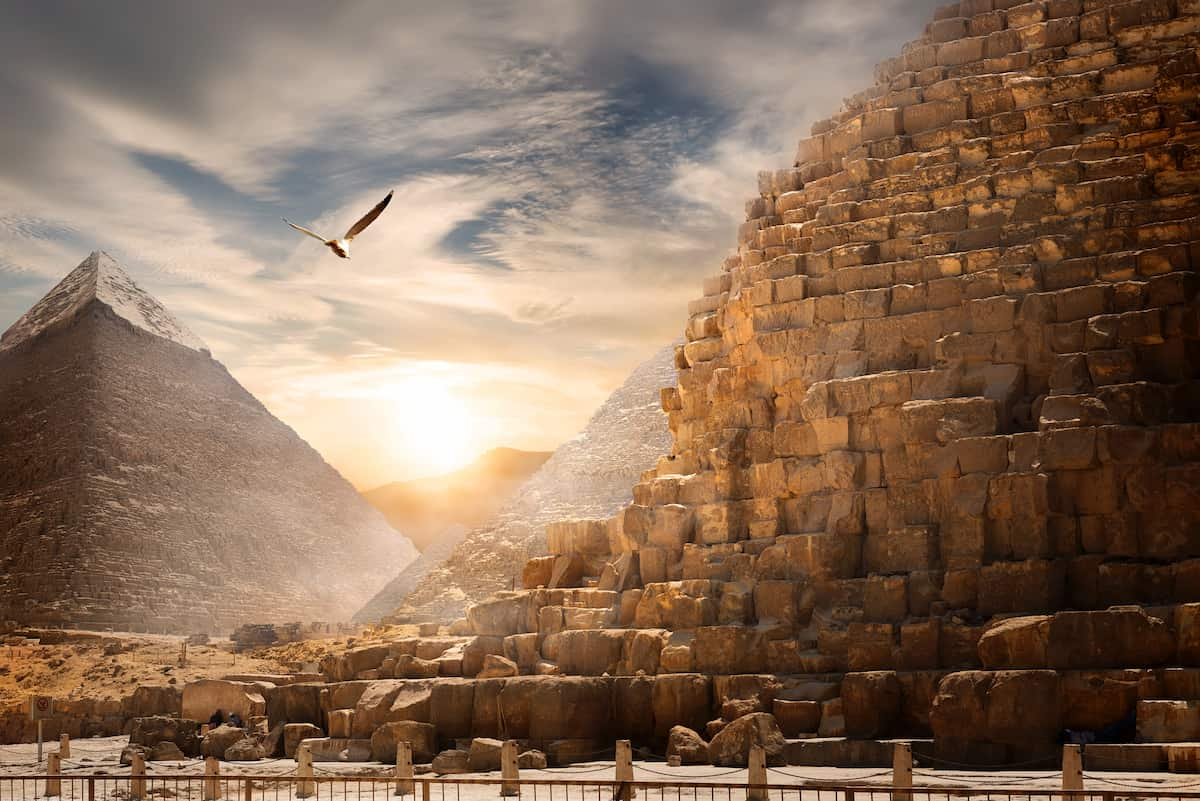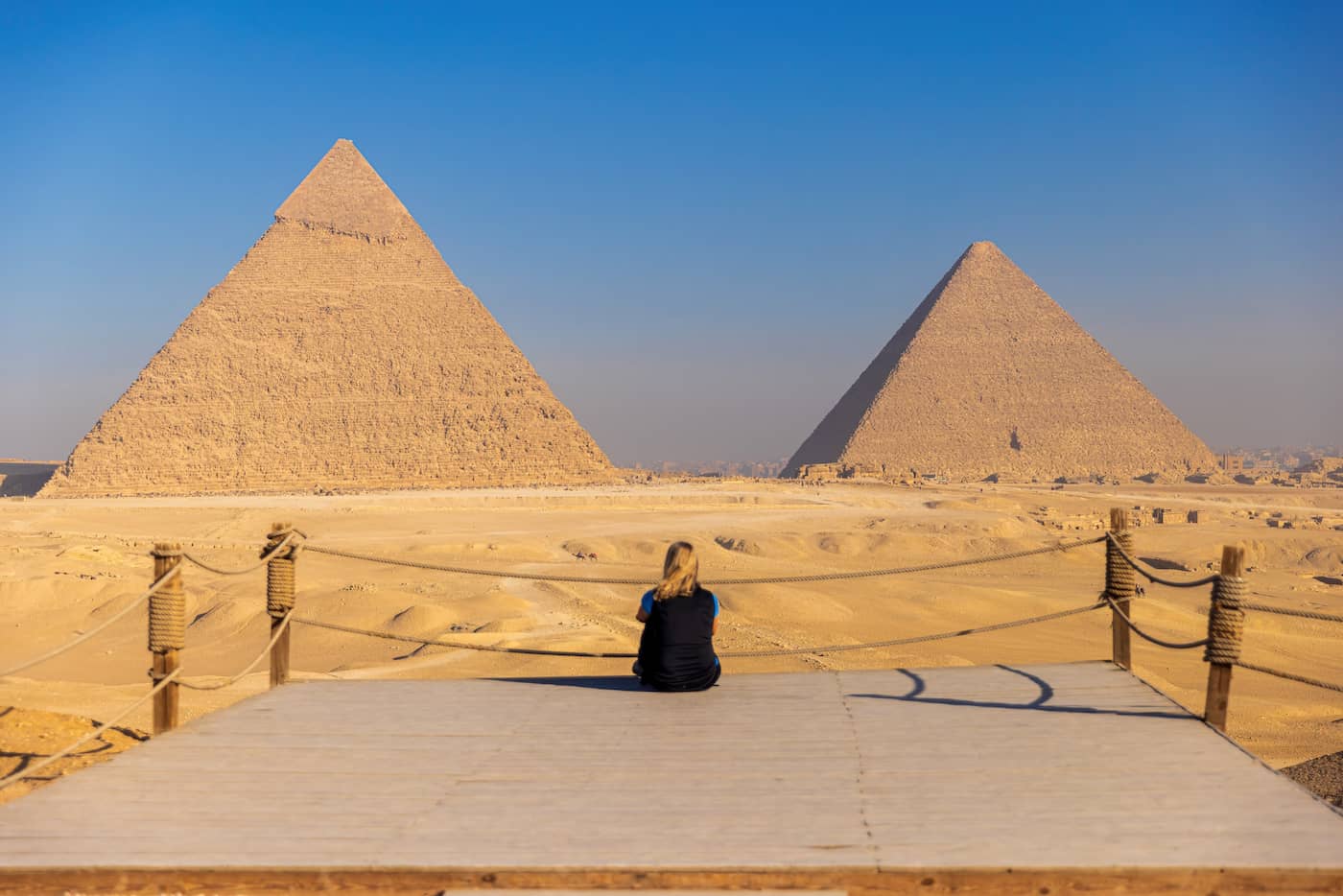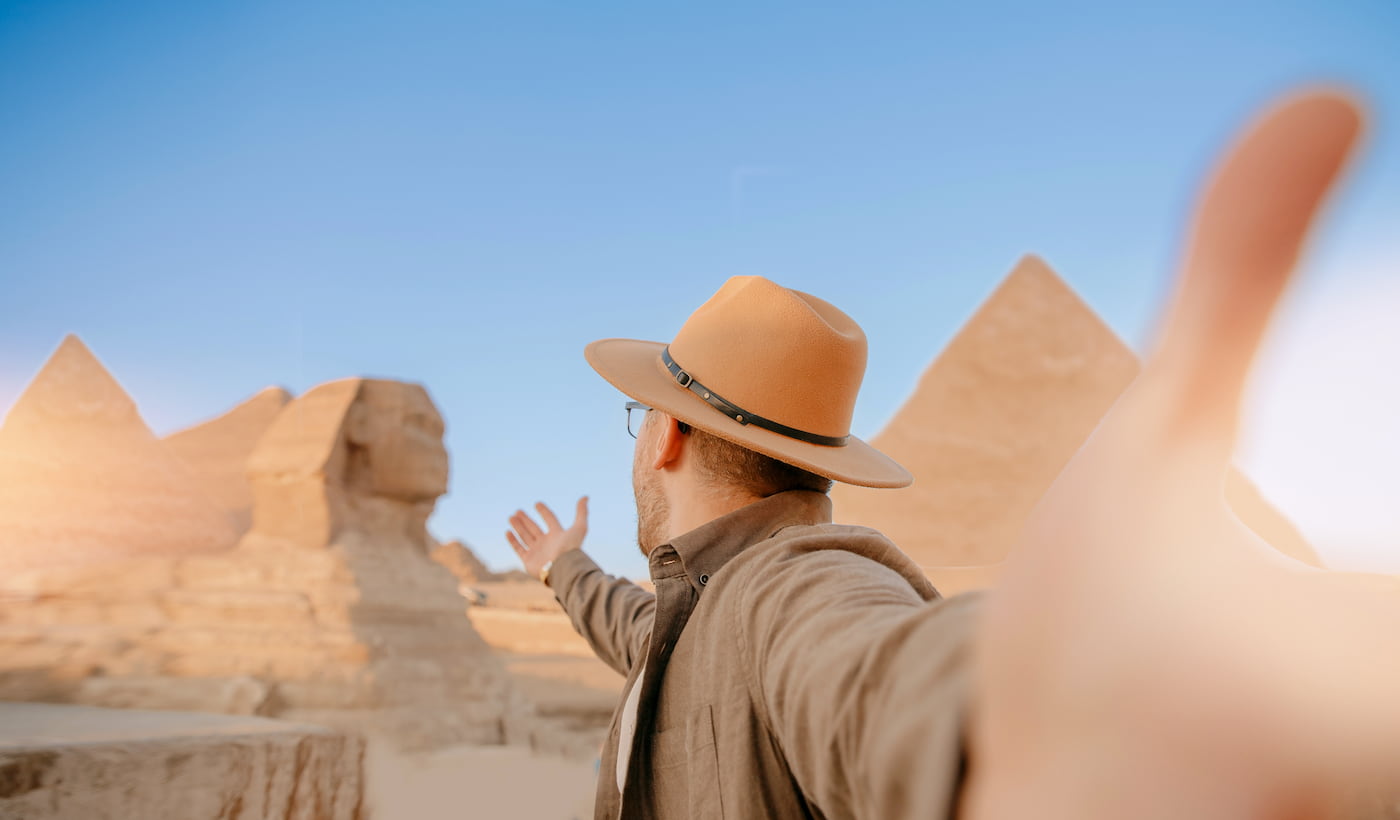Traditional Egyptian Cuisine: A Journey from Ancient to Modern Egyptian Food
What did the ancient Egyptians eat? Traditional Egyptian food is one of the oldest cuisines in the world. It dates back thousands of years, during the time of the pharaohs. Simple and healthy meals were prepared out of whatever the Nile River provided: bread, beer, lentils, onions, garlic, and vegetables. They felt that food was not merely for eating but was also for religion and use in the afterlife. Therefore, they would leave food in the tombs and also present food as gifts to the gods.
With time, Egyptian food slowly changed. New people came, bringing with them different ingredients like rice, tomato, and spices. But what remained constant were the principles of having fresh, simple, and heavily flavored food. Today, everybody adores koshari, ful medames, molokhia, and mahshi from small villages all through to big cities. Egyptians eat with family and friends. The culture is big on sharing meals and eating together. Be it a roadside Amuse-bouche or a meal prepared at home, traditional food brings enjoyment to people and tells the story of Egypt’s ancient past. In every bite, one can taste the fusion of the old with the new, a true taste of Egypt’s past and present.
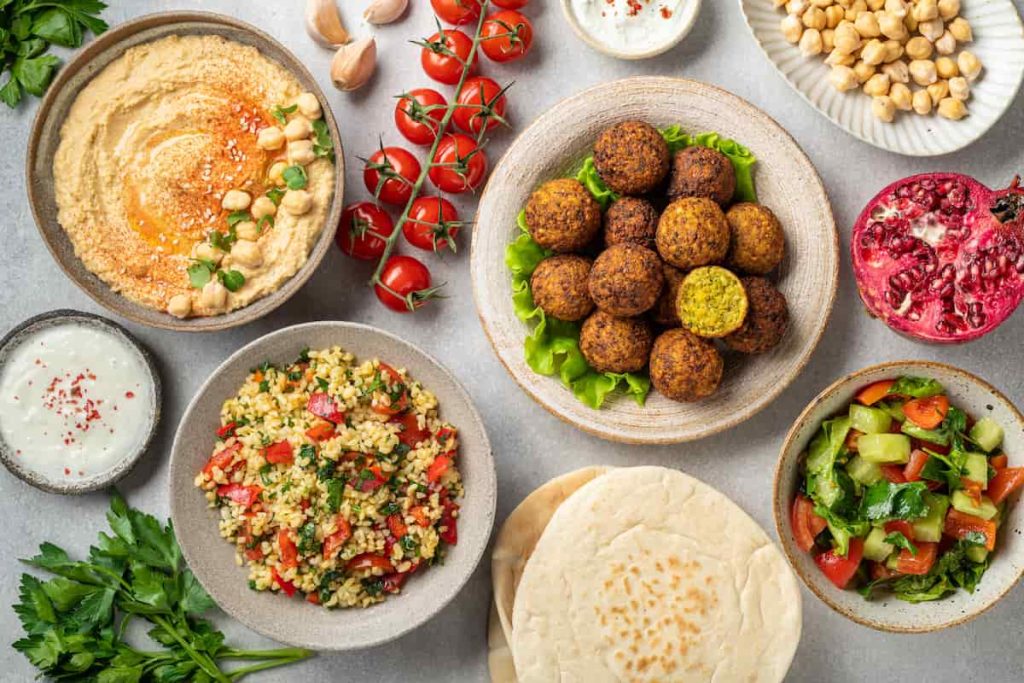
1- What Did The Ancient Egyptians Eat
The ancient Egyptians lived simple but mostly nutritious lives under the light offerings of the Nile. Most common were bread and beer, with the former being made from wheat and the latter from barley. These were consumed daily by the very rich and the very poor. Vegetables of many kinds were consumed: onions, garlic, leeks, lettuce, cucumber, and radishes. Lentils, fava beans, and peas were cooked in stews and soups.
Dates, figs, grapes, and pomegranates were favorite fruits; honey was employed to sweeten foods as they did not have sugar. Many did not consume meat often. Sometimes fish, duck, and goose were consumed, with meat generally reserved for the rich or festive occasions. In giving flavor to food, the Egyptians used several herbs and spices such as coriander, cumin, dill, and mint. Food was cooked with clay ovens, stone grinders, and pots, and most of the cooking was done at home. Food had some religious importance. It was offered to the gods and placed in tombs as food for mortals in the afterlife. Eating, therefore, was not only meant for living, but something very much linked with their beliefs, culture, and everyday life of What Did The Ancient Egyptians Eat. Read More here
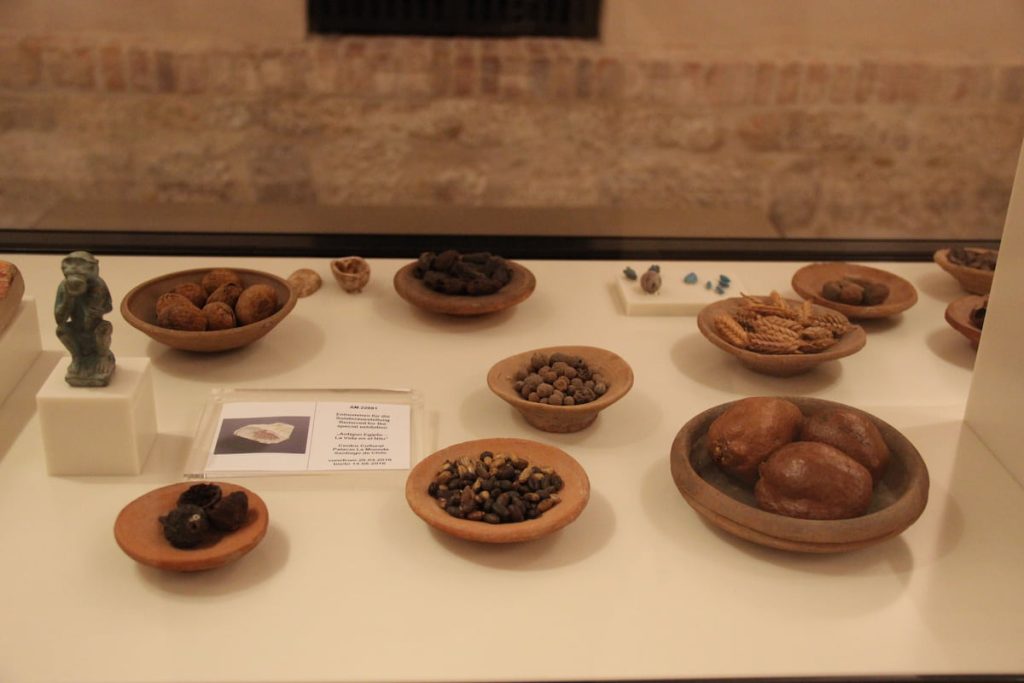
-
Ancient Egyptian Meals
Generally, two meals a day were eaten by people in Ancient Egyptians: one in the morning and one at night. Moreover, they ate bread, beans, vegetables, and sometimes fish or eggs. Additionally, more food would be available for the rich ancient Egyptians, like meat, ducks, or fruit. The meal was eaten either outdoors or sitting on the floor for Ancient Egyptians families. Moreover, family members ate together. Eating was not just to satisfy hunger but also to make time for togetherness. This part tells which foods were eaten every day in Ancient Egypt.
-
Cooking in Ancient Egypt
The cooking in Ancient Egypt happened with simple knives. Bread baking would be done in clay ovens with the food cooked over a fire. Grain would be ground with stone tools, while pots were used for boiling food. Most of the cooking was done by Ancient Egyptians women in their homes, where herbs and spices would be added for flavor. Food was also made for the Ancient Egyptians gods and special occasions. This part explains food in three categories: home, temple, and wealthy.
-
Tools Did Ancient Egyptians Use to Prepare Food
Ancient Egyptians used many simple but resourceful tools for their everyday food preparation. While crushing grain to make flour for the bread, the Egyptians used grinding stones or querns. The clay oven was for baking the bread, while ceramic pots were used to prepare stews, boil water, or even store foods. Copper or bronze knives, wooden spoons, food-carrying baskets, and strainers for washing food were all in common use. Most of the cooking would take place over the open fire. These tools were used daily in many kinds of houses, from small village houses to large kitchens found in temples and palaces. A few of these were even found in tombs to aid in cooking in the afterlife, highlighting the importance of food even after death. These tools tell us so much about how cooking and lifestyle were shared amongst common and aristocratic classes.
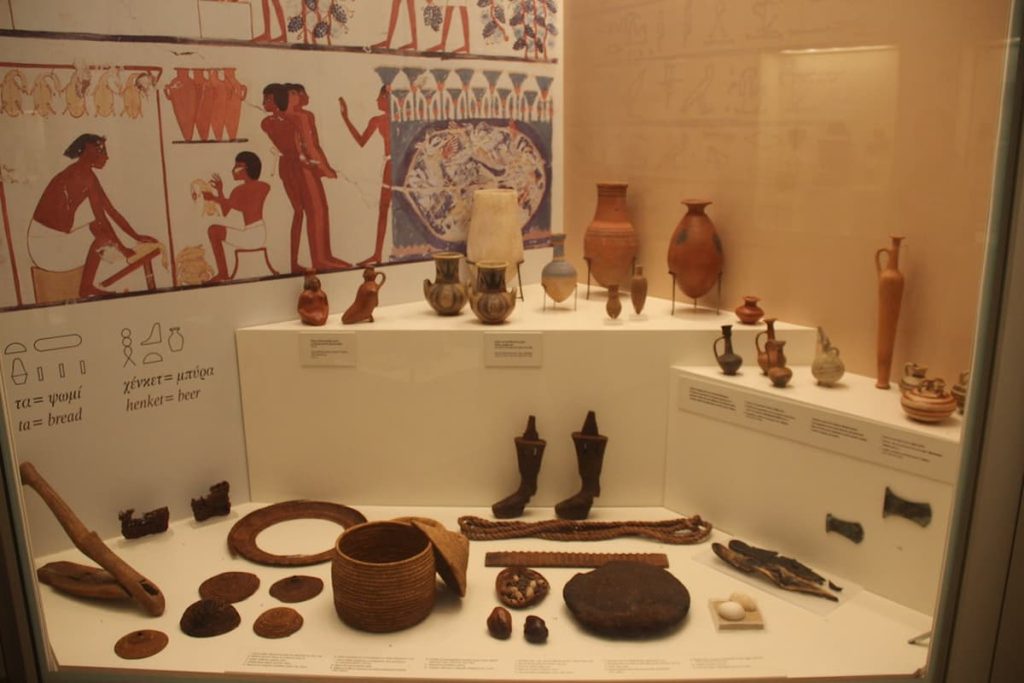
-
Cooking Methods and Tools
Within ancient Egypt, the presence of simple tools characterized food preparation. The bakers would bake bread in clay ovens, while grains would be ground in stone grinders. Clay pots might be employed in cooking a stew, vegetables, and some meat over open fires. Among the common utensils were knives, wooden spoons, wooden baskets, and strainers. Cookware of bronze or copper would have been used by affluent families. Most cookery was accomplished at home, but food bore greater significance. Indeed, some implements were placed in tombs for use in the afterlife. These instances demonstrate how the simple Egyptians whetted our appetite from basic ingredients and how food was entwined with everyday life and belief.
2- Egyptian Food Culture And Traditional Egyptian Food
All of its elements revolve around family, sharing, and traditional values. In Egypt, food is not simply something to eat; it is a way to connect with people and to express care and love toward that person. Meals are shared between family and friends, and people enjoy eating together on days such as holidays and special occasions. Bread is a staple in every meal, while many dishes are prepared from beans, rice, vegetables, and herbs.
Egyptian food is rich in flavor, but simple ingredients are required most of the time. Dishes like koshari, ful medames, molokhia, and mahshi are favorites throughout the country. Many of these recipes have been passed from generation to generation, and to this day, they are still prepared in the way of their ancestors.
Food is also hugely important in religion and festivities. Together, families sit down for special meals during the month of Ramadan. Those days of Eid are reserved for great big feasts that allow all to join in. Food was even placed inside the ancient tombs in Egypt to help feed the people in the afterlife. Whether small measures met at home or grand feasts hosted by neighbors, Egyptian cuisine across time binds people side by side with stories. Egyptian food culture brings people together around meals, converting traditions into a living reality.
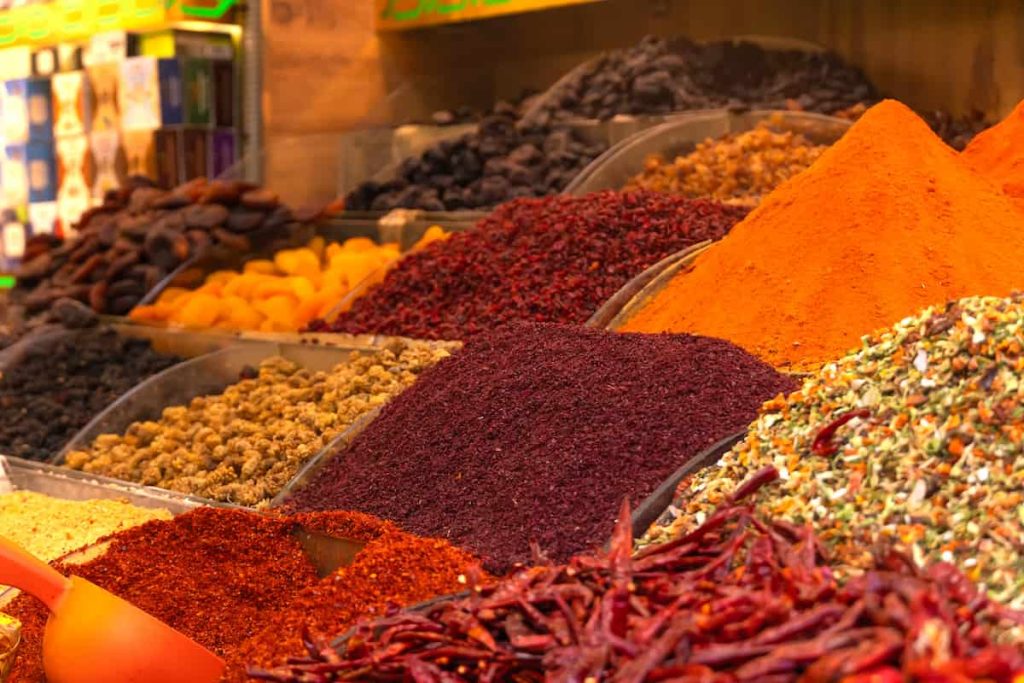
3- Traditional Egyptian Food Names
Firstly, Traditional Egyptian Food Names is one of the codes that shows the country’s culture. Moreover, it reflects the country’s rich history and love for flavorful, home-cooked meals. Furthermore, these dishes have been passed down through generations and are still enjoyed across Egypt today. Besides, most of the known meals use basic ingredients like beans, rice, bread, and herbs, but the result is always full of taste. Therefore, keep these names in your mind for your next visit😉
- Koshari
A mix of rice, pasta, lentils, chickpeas, and fried onions topped with tomato sauce and spices. A famous street food.
- Ful Medames
Cooked fava beans served with oil, lemon juice, garlic, and spices. A classic Egyptian breakfast.
- Ta’ameya (Egyptian Falafel)
Fried patties made from fava beans, herbs, and spices. Crispy outside and soft inside.
- Molokhia
A green leafy soup made from molokhia leaves, cooked with garlic, coriander, and broth. Served with rice or bread.
- Mahshi
Vegetables like zucchini, peppers, or grape leaves stuffed with rice, herbs, and tomato sauce.
- Hamam Mahshi
Stuffed pigeon, usually filled with rice or freekeh (green wheat) and roasted.
- Fattah
A layered dish of rice, bread, and meat, topped with garlic-vinegar sauce. Often served at celebrations.
- Roz Bel Laban
Sweet rice pudding is made with milk, sugar, and sometimes cinnamon or nuts.
- Basbousa
A soft, sweet cake made from semolina and soaked in sugar syrup. And you can read more here about the ancient Egyptian foods and Drinks. Lastly, check out our top 10 Foods in Egypt
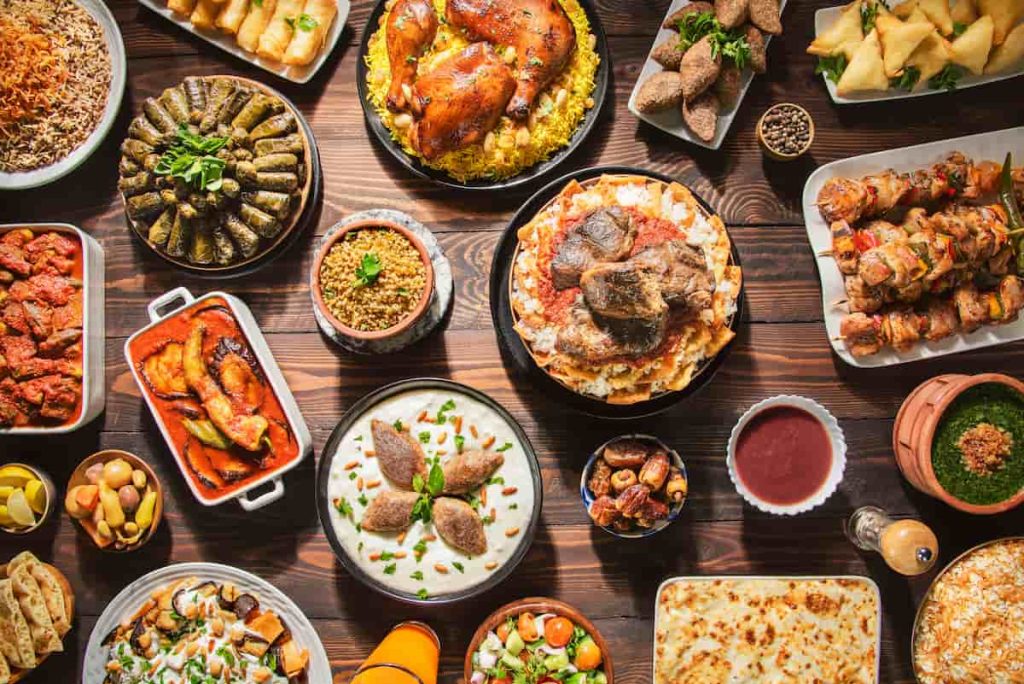
4- Traditional Egyptian Food Restaurants In Egypt
Traditional Egyptian food restaurants in Egypt offer an embrace of a warm and authentic taste of the country’s rich food culture. Such places are found everywhere in the bustling streets of Cairo and Alexandria, and you can check the Top 10 Restaurants in Cairo. The foods served are those that have been passed down through the generations and include koshari, ful medames, molokhia, ta’ameya, and mahshi. Each meal is given its due attention and is made with fresh, simple ingredients that pack a punch of flavor.
Some are tiny, family-run affairs where recipes are handed down unchanged from generation to generation, while others are set in larger spaces serving traditional fare in cozy modern settings. However, whatever the size, they are all united by one objective: to present truly home-style Egyptian cuisine. Here, you usually share your food, just like you do at home. Inhaling the aromas of spices, grilled meats, and baked bread, it goes beyond just food into a feeling, an embrace of togetherness.
Eating in a traditional Egyptian restaurant is an excellent introduction to Egypt’s culture, whether local or a tourist. While keeping those ancient flavors alive, foods also aid in uniting people, just as they’ve been doing in Egyptian homes for ages.
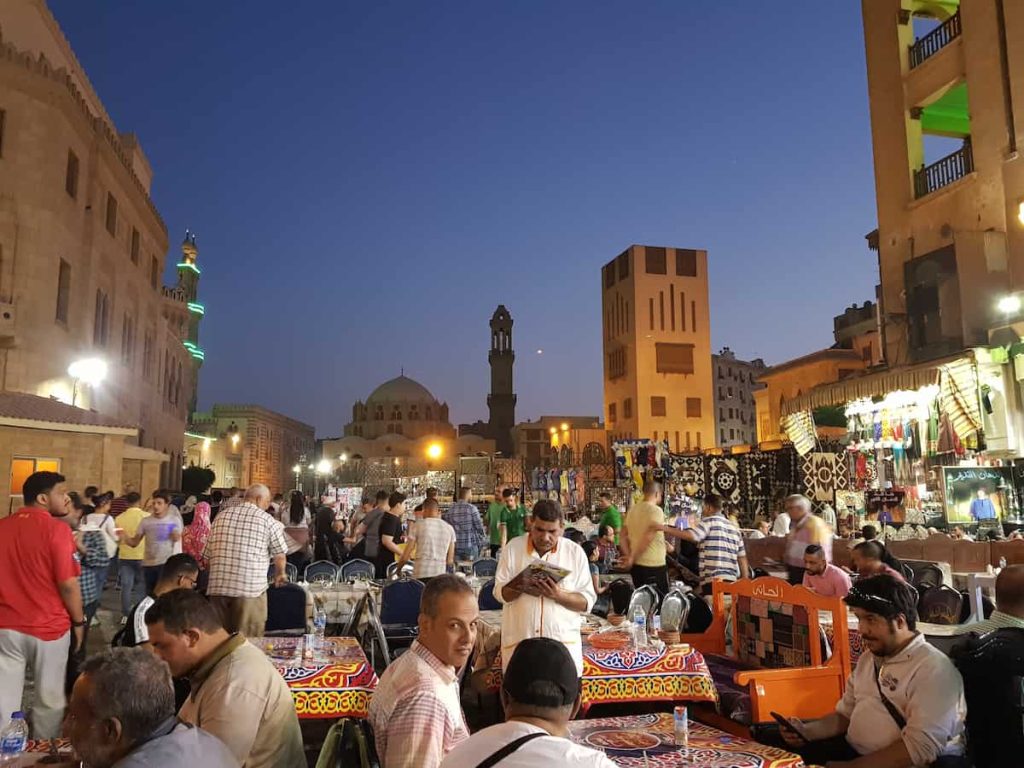
5- Comparison of Ancient and Modern Egyptian Food
🏺 Ancient Egyptian Food
Over the course of time, Egyptian cuisine has evolved, but many traditions still remain. The ancient Egyptians made their food from what the Nile River had to offer. Mostly they had bread and beer, and some vegetables, lentils, onions, garlic, and dates. Occasionally, amounts of meat appeared on the plates of wealthy people or were enjoyed during the festivities. Food was also an integral part of religion: offerings were presented to the gods, and food would be left in tombs for use in the afterlife. Cooking was done employing clay ovens along with stone tools, and mostly home-cooked meals were prepared.
🍽️ Modern Egyptian Food
In modern Egypt, food still follows some ancient notions: simple ingredients, bold tastes, and shared eating experiences. But nowadays rice, tomatoes, potatoes, and spices have been added to the mix. With newer kitchens using gas stoves, electric tools, and refrigeration, cookery has become so much easier and quicker. The ingredients and tools might have changed, but the very feeling of Egyptian food is about bringing people together. Whether it’s an ancient meal in a tomb or dinner in a modern home, food in Egypt always speaks of family, tradition, and culture.
6- Common Meals and Eating Habits in Modern Egypt
In the current lifestyle of Egyptians, food plays a significant role. Eating is generally an activity carried out in the company of family and friends. Most Egyptians have three meals a day. Breakfast follows very light fare, with ful medames besides mashed fava beans, ta’ameya (Egyptian falafel), cheese, bread, and tea. Lunch is the heaviest, usually taken somewhere after 2 pm or 3 pm. Dishes that can be served during lunch include rice, vegetable stews, molokhia, meat, or chicken, with a side of baladi bread. Dinner, on the other hand, is lighter, maybe a sandwich, eggs, or yogurt.
Egyptians love to eat together, and this is common, especially during holidays and family events. There is a big lunch to be enjoyed on Fridays by many families. Street food is huge, with koshari, shawarma, and grilling.
Egyptians often eat food with bread rather than with forks, picking up pieces of food with the bread. The food is full of spices and flavor, while its ingredients are usually very simple and fresh. Among Egyptians, being hospitable means guests are offered food or drinks to consume. Whether eating at home or restaurants, eating in Egypt never simply means food; it stands for bonding, tradition, and togetherness.
Conclusion
Traditional Egyptian food stands for a great deal in the culture, history, and daily life of Egypt. Throughout the ages, the Egyptians have always consumed foods made from simple and fresh ingredients. Several dishes like koshari, ful medames, molokhia, and mahshi have been passed from generation to generation. These recipes convey great taste and the love and care that go into preparing any given meal.
Food in Egypt is not just fuel for the stomach but a uniting element. Families and friends share meals on holiday occasions, celebrations, and Friday afternoons. Hospitality is high on the agenda; you always have to be offered something to eat or some tea, no matter how brief your visit is.
Egyptian food is synonymous with togetherness and warmth, whether labored over in the kitchen, eaten at a sit-down restaurant, or even if it’s from the street side. From how food is prepared to how it is eaten (in many cases, with bread rather than forks), this food is traditional.
Traditional Egyptian food and ancient Egyptian food mean far more than just tasty dishes. It celebrates the culture of a land that values family, respect, and sharing. Every bite of what did the Egyptians eat is filled with the heart of Egypt: its past, its people, and its culture.

